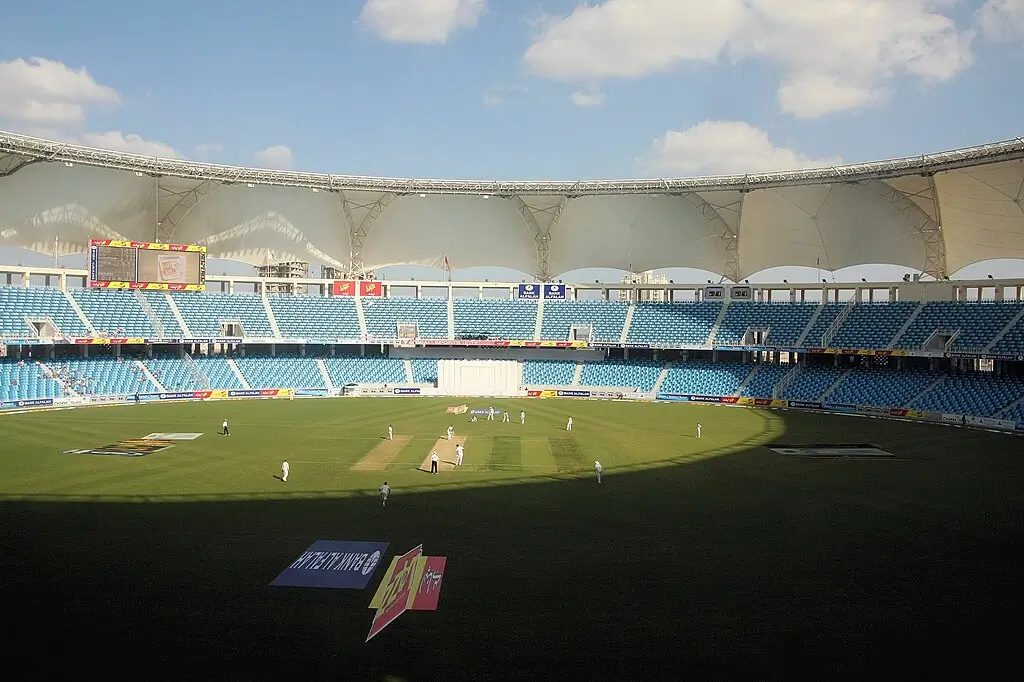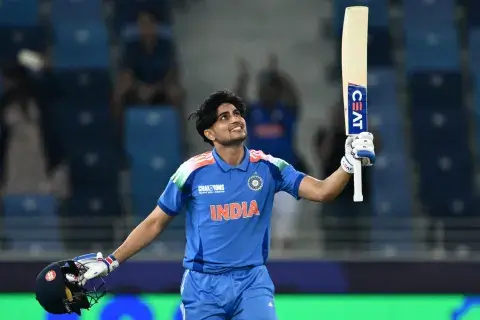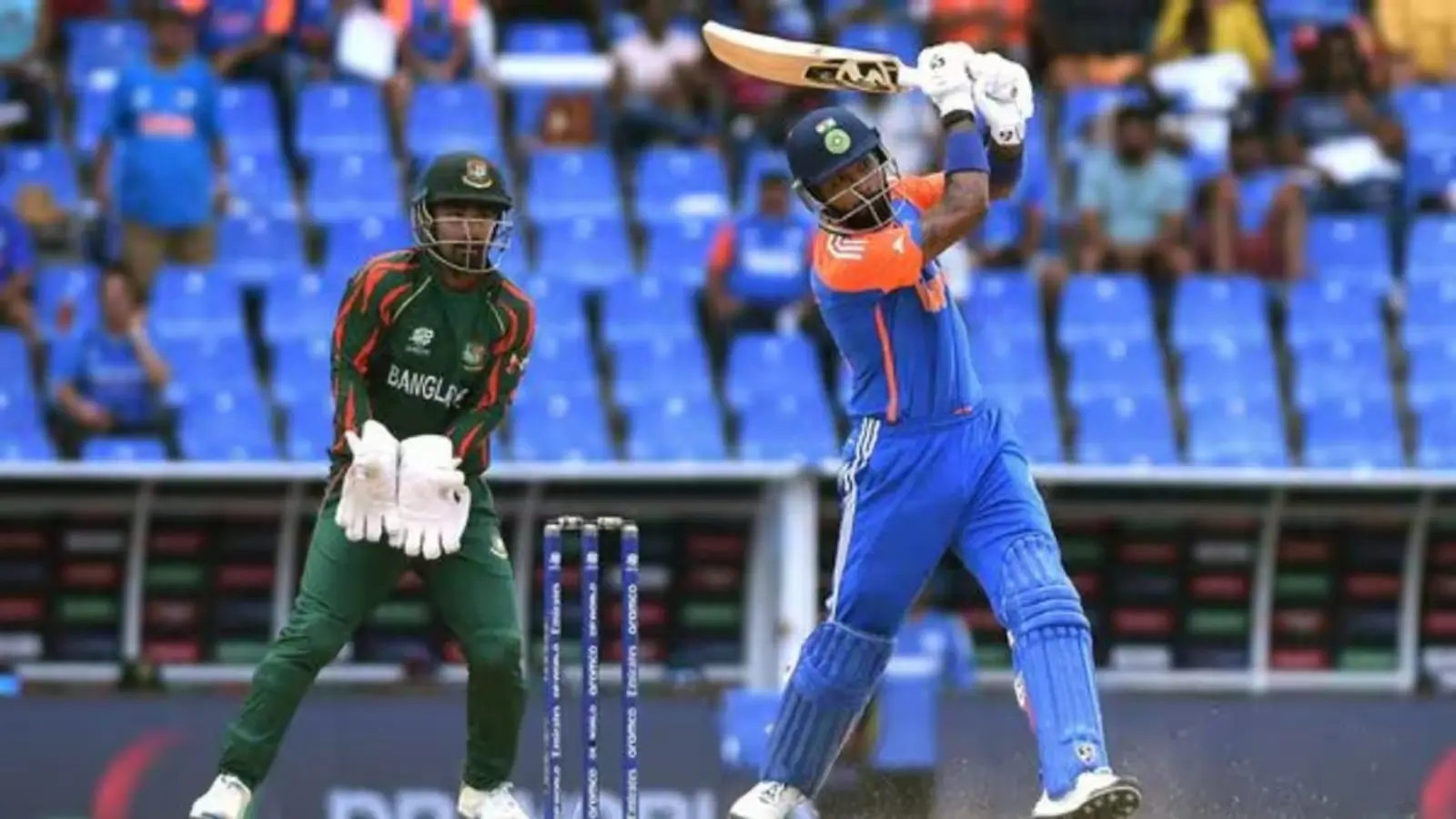The India vs Pakistan clash in the ICC Champions Trophy 2025 will take place at the Dubai International Cricket Stadium, a venue known for its slow pitches and unpredictable bounce. The IND vs BAN match showed that the surface can be tough for batters, especially in the second innings. There was no dew, making chasing harder than expected. Fast bowlers got limited swing, but spinners became more effective as the match progressed in India vs Pakistan pitch for the match.
Shorter square boundaries provide an advantage for batters, while long straight boundaries make clearing the rope difficult. With both teams relying on spin attacks, the match could be a low-scoring thriller. The toss will be crucial, and teams might prefer batting first to avoid struggling on a slowing pitch under lights.
What is the Boundary Length at Dubai International Stadium?
The outfield in Dubai was in excellent condition, allowing the ball to travel quickly. The square boundaries (63-65 meters) make pulls and cuts rewarding, while the straight boundaries (75-78 meters) demand well-timed big shots. Fans can expect a thrilling contest where patience, skill, and adaptability will decide the winner in this virtual quarter-final.
The square boundaries were shorter, making cuts and pulling high-scoring options. However, the front and straight boundaries were much longer, making big shots down the ground more difficult.
Teams that can manipulate the field and take advantage of shorter square boundaries will have an edge. Power hitters will need to choose their shot selection wisely, as mistimed shots down the ground could lead to easy catches.
Pitch Conditions: Slow and Challenging for Batters at Night
The Dubai International Cricket Stadium pitch proved slow and difficult for batting, especially in the second innings. Unlike expectations, there was no dew, making it harder for batters to play big shots under lights. Shubman Gill’s century highlighted the importance of patience and timing on this surface as he did in venues like Narendra Modi Stadium and Barsapara Stadium
The pitch did not allow free stroke play, and batters had to rely on placement and running between the wickets. As the tournament progresses, batting under lights might remain challenging, favoring teams that bowl first.
Swing Conditions: Limited Movement for Pacers in Both Innings
The pitch provided minimal swing for pacers, with movement lasting only the first five overs of the innings. Once the shine wore off, the ball stopped swinging, making conditions more predictable for batters. Under lights, the situation remained the same, with very little seam movement.
Fast bowlers had to focus on variations rather than relying on swing. Teams with strong change-of-pace bowlers will have an advantage in the remaining matches at this venue.
Uneven Bounce: A Major Challenge for Batters
One of the most significant issues in this match was the inconsistent bounce of the pitch. Some deliveries were kept low, making stroke play challenging, especially for batters looking to play on the rise. As the tournament progresses, the wear and tear of the surface might make batting even trickier.
Teams will have to adjust their shot selection, focusing more on grounded strokes rather than attempting aerial shots. This factor, like in the Nassau County Stadium clash between India and Pakistan, will be crucial in upcoming matches, especially for teams with strong spin attacks.
Spin Factor: Effective in Middle Overs and Late in the Innings
Spinners played a big role in both innings, troubling batters with turn and grip. As the match progressed, the dry surface started assisting spinners, making them more effective in middle and death overs. If dew remains absent, spinners could become match-winners in the later stages of the tournament.
Teams with quality spinners, like India and New Zealand, will have a huge advantage in controlling the game. Slow bowlers who can vary their speed and length will be the most effective on this pitch like HPCA Stadium.
Overall Analysis: Bowl First and Capitalize on Slower Conditions
Based on the IND vs. BAN match, teams might prefer bowling first to take advantage of early movement and control the chase later. Batters will struggle to accelerate in the second innings with the pitch slowing down at night. Spinners and variations in pace will be key to success in Dubai. Captains must plan their strategies accordingly, as setting a high total might be more beneficial than chasing on this unpredictable surface, but the stadium had facilities like Talkatora Stadium for players.
Conclusion: A Battle of Spin, Skill & Strategy
India and Pakistan must adapt to Dubai’s tricky conditions in this high-stakes encounter. The pitch will slow down, making stroke play difficult in the second innings. If dew stays away, spinners could dominate the match, forcing batters to work hard for their runs. India’s firm top order and lethal spin attack give them an edge, but Pakistan’s pacers can exploit early swing and put India under pressure.
The toss will be a game-changer, and teams must adjust their batting and bowling strategies accordingly. Fans can expect a thrilling contest where patience, skill, and adaptability will decide the winner. Whether it’s a batting masterclass or a spin battle, this game promises to be a memorable showdown in cricket history.
















